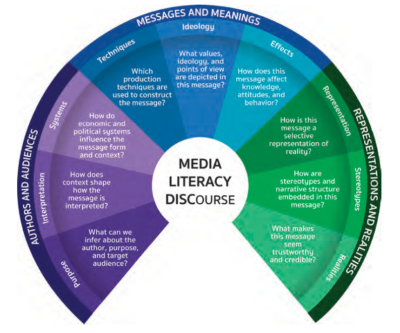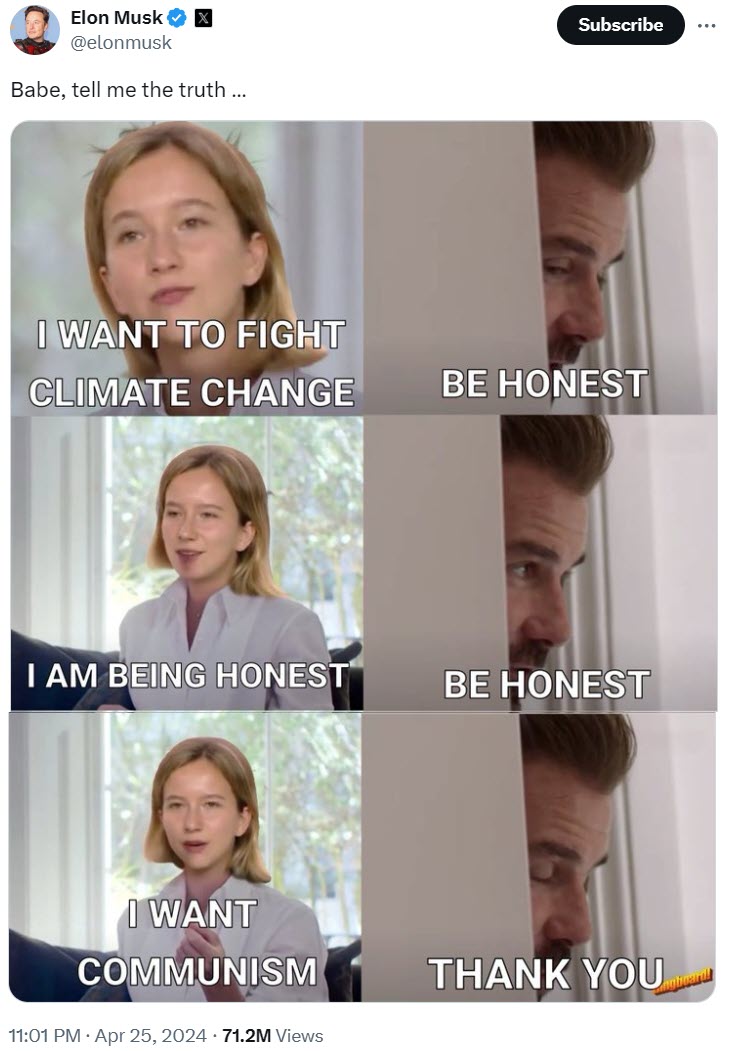Sign up for daily news updates from CleanTechnica on email. Or follow us on Google News!
As part of my morning scan of the news, I was surprised to see an article from a Fox News about electric vehicles which seemed, on first glance, to be told from an empathetic point of view. The article, culled from Nexstar Media Wire, was curious to me, as I think of Fox News as a rabid proponent of the fossil fuel industry.
Is there a change of editorial perspective going on at Fox? Was this article an aberration? Is there some embedded subtext that directs the audience toward or away from embracing EVs? It’s hard to figure. After all, as Hurricane Milton approaches the Gulf Coast of Florida, another Fox News affiliate has chosen to post an article — of all the topics they could to guide their readers toward safety and security as a Category 4 storm approaches — titled “Electric Vehicles could Ignite during Hurricane Milton.”
Let’s look at the article together, shall we? We’ll use a framework provided by the Media Education Lab (MEL) to ground our analysis.
It’s part of the Media Literacy in Action: Questioning the Media second edition from MEL founder, Renee Hobbs. The book recognizes that everyone is vulnerable to media influence because of our dependence on the instant gratification and feelings of connectedness that digital platforms provide. To thrive in a media-saturated society, Hobbs argues, people need to ask critical questions about what we watch, see, listen to, read, and use.
 Chip in a few dollars a month to help support independent cleantech coverage that helps to accelerate the cleantech revolution!
Chip in a few dollars a month to help support independent cleantech coverage that helps to accelerate the cleantech revolution!
The medial literacy discourse model helps us to build critical thinking skills with nine questions to analyze any media text. It’s useful to dig deeply into the way a particular Fox News affiliate addresses EVs.
Purpose: What can we infer about the author, purpose, and target audience?
Author: A single human author is not listed. Instead, iSeeCars is a car search engine that makes it “easier and much less time-consuming for consumers to find the best deals and save money.” The site was founded by technology veteran Vineet Manohar, who formerly led Big Data projects at TripAdvisor. Thus, when a reader clicks on this particular article, they are agreeing to collecting data on their preferences to sell to companies.
Purpose: The article intends to a broad overview of types of EV and their classification into four main categories, its main components, and levels of charging.
Target audience: Because these are basic primer topics, the author seems to be attempting to offer an introduction to an audience without prior knowledge. It’s not intended to be a deconstruction or a nuanced examination of life with an EV — more of a way to open the door to understanding personal transportation electrification.
Interpretation: How does context shape how the message is interpreted? The quick discussion of traction battery pack, power inverter, electric motor, charge port, transmission, DC/DC Converter, and thermal system takes a whole lot of information and compresses it into one rather quick section. The context that is created implies that EVs are complicated and really different than internal combustion engine vehicles (ICEVs), the latter of which is familiar to the reader.
Systems: How do economic and political systems influence the message form and content? Right now there is a lot of mis- and disinformation about electric vehicles. As our editor, Zachary Shahan, wrote a couple of weeks ago, questions about the viability of clean technologies typically stem from “purposeful disinformation created by special interests, most notably fossil fuel industries.” They fund “information sources,” put out misleading arguments, and incentify a variety of sources — paid and unpaid — to “spread that misinformation/disinformation, and spread it, and spread it, and spread it.”
Techniques: Which production techniques are used to construct the message? The content of this Fox News article comprises only about 25% of the entire web page on which it is posted. Surrounding it are a dozen or static or video ads, a list of other articles to consider from the iSeeCars source, a video about pending Hurricane Milton, a dozen images that hyperlinks to Sponsored Content, several Best Reviews, Top Stories, More Stories, and other Fox affiliate articles. Recognizing that this article is a mechanism to collect data from its readers, the various opportunities to click through to other spaces on the site indicate that longer time spent on the site means more opportunities to collect data from an audience that is primarily uninformed about EVs.
Ideology: What values, ideology, and points of view are depicted in this message? The article assumes that its audience not only prefers ICEVs but also has little to no exposure to EVs. It poses the idea of EVs as novel and a bit futuristic, as if to buy one would be something that the next generation might engage in but not today’s reader.
Effects: How does this message affect knowledge, attitudes, and behaviors? A typical Fox News audience would likely find the article illuminating at first glance due to the array of information and different topics. If the reader does finish the article, however, the dry information would likely be off-putting. We know as climate activists that it’s important to embrace a shared reality through self-disclosure as a really important element of climate conversations. This article didn’t make any personal connections about driving an EV, so its abstraction probably didn’t empower anyone to take the EV plunge.
Representation: How is this message a selective representation of reality? The article states as its theme, “After all, today’s electric cars look and drive like traditional gas-powered cars, but it’s important to understand the differences between these two vehicle types.” That statement represents a partial reality in which the latter part of the compound sentence (“understand the differences between these two vehicle types”) has a subtext that EVs are inherently more problematic, difficult, and complicated than ICEVs. A more instructive theme would’ve referred to the calm that individuals experience after gaining familiarity with an EV and how it works.
Stereotypes: How are stereotypes and narrative structure embedded in this message? The article equates all types of low emission vehicles as equivalent, when clearly it is only battery EVs that are zero emissions. Suggesting that a Level 1 charger is “effective and very inefficient” for plug-in hybrid electric vehicles “to maximize your vehicle’s all-electric range,” just isn’t true. Most plug-in hybrids have fewer than 50 miles of electric range, which means that overnight charging with a regular household outlet is perfectly adequate. Including fuel cell EVs as viable zero-emission vehicles in today’s marketplace is misleading.
Realities: What makes this message seem trustworthy and credible? The article offers stats about EV global adoption, including how EV sales rose 35% in 2023. It notes that the US is leading the charge at 60% growth, reflecting increasing demand for sustainable transportation, and cites the International Energy Agency. It acknowledges that, as many consumers consider an electric vehicle for their next car purchase, “they may be curious about how these electric vehicles work.”
It also offers positive affirmation in its summary, which is hopeful, suggesting that “today’s electric cars look and drive like traditional gasoline-powered cars, but they have fewer moving parts and require less maintenance.”


Have a tip for CleanTechnica? Want to advertise? Want to suggest a guest for our CleanTech Talk podcast? Contact us here.
Latest CleanTechnica.TV Videos
CleanTechnica uses affiliate links. See our policy here.
CleanTechnica’s Comment Policy





